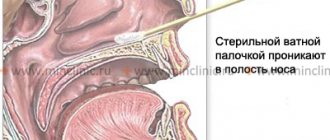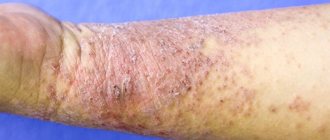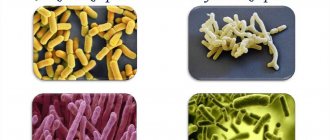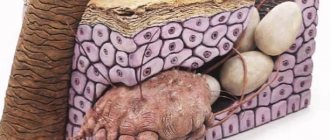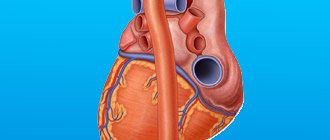Kinds
This disease can occur in different forms. There are five types of gastroenterocolitis depending on the presence of inflammation:
- hemorrhagic;
- catarrhal;
- fibrinous;
- ulcerative;
- phlegmonous.
Depending on the course of the disease itself, gastroenterocolitis can be divided into chronic, acute and subacute. The acute form of the disease can occur as a result of complications after the flu, after food poisoning, after suffering a number of infectious diseases (infectious gastroenterocolitis), as a result of an allergic reaction of the body. The infection can enter the intestines in two ways: through the mouth or through the blood. Chronic gastroenterocolitis develops as a consequence of damage to the digestive tract. The disease recurs and may not appear for many years.
General information
Gastroenterocolitis is an inflammatory lesion of the stomach, large and small intestines. The disease can be acute or chronic. Acute gastroenterocolitis responds well to treatment if the true source of the pathology is quickly identified and eliminated. In chronic cases, special attention is paid to lifestyle correction and diet. Acute gastroenterocolitis in severe cases requires a 24-hour hospital stay, mild forms are treated on an outpatient basis. The code for gastroenterocolitis according to ICD-10 is K52.
Pathogenesis
In infectious gastroenterocolitis, the pathogenesis is determined by the pathogen. In all cases, the pathogenic agent enters the body through the nutritional route , through the mouth. Next, microorganisms multiply and die in the intestines with the release of endo- and exotoxins. Intoxication of the body develops as a result of the negative effects of toxins on the mucous membrane of the digestive tract.
Types of toxins:
- neurogenic toxins ( Dysentery , Botulism );
- toxins that change the structure of intestinal epithelial cells ( Cholera );
- toxins that cause necrosis ( Amebiasis ).
With salmonellosis, the pathogenic agent first penetrates the mucous membrane of the digestive tract, and from there it is transported into the bloodstream.
The basis of alimentary gastroenterocolitis is acute indigestion due to an unbalanced and irrational diet. The alimentary form is most often found in patients suffering from functional disorders of various parts of the digestive chain:
- insufficient secretory capacity of the stomach;
- defects in the masticatory apparatus;
- intestinal dyskinesia;
- violation of bile drainage ;
- violation of the secretory ability of the pancreas.
Gastroenteritis can also be triggered by allergic responses to certain foods.
Non-infectious gastroenterocolitis is characterized by the presence of foci of inflammation in the tissues of the stomach and intestines in the form of:
- swelling of the mucous membrane;
- increased cellular infiltration;
- excessive exudation;
- hyperemia;
- dystrophic changes in the surface epithelium.
Changes in the digestive tract can be generalized or localized.
Foodborne illnesses
A typical example of gastroenterocolitis is food poisoning. This is a group of diseases that occur when microbial agents and (or) their toxins enter the body along with food. The disease typically has an acute onset, a rapid course, symptoms of general intoxication and damage to the digestive organs. The cause of foodborne toxic infections can be a variety of bacteria: salmonella, shigella, escherichia, streptococci, spore anaerobes, spore aerobes, halophilic vibrios, staphylococcal enterotoxins types A, B, C, D, E.
Source of infection
- a sick person or a bacteria carrier, as well as sick animals and bacteria-shedding animals. Microbes get on food products, mainly those that are not cooked. For example, staphylococci can multiply in milk and dairy products and release specific toxins. At the same time, the appearance and smell of the product is no different from the usual one. Often the disease can be associated with the consumption of cakes and pastries with milk or butter cream, cottage cheese. Other bacteria more often contaminate meat pates, canned fish in oil, vegetable dishes, and salads. The disease can occur in both sporadic cases and outbreaks. The incidence is recorded throughout the year, but increases slightly in warm weather.
Classification
There are several forms depending on the nature of changes in the tissues of the stomach and intestines:
- Catarrhal form . The inflammatory process is limited by hyperemia, slight swelling of the mucous membranes together with intense production of exudate.
- Fibrous form . As a result of the interaction of fibrinogen and tissue thromboplastin, fibrin is formed, which settles in the form of plaque on the inner surface of the intestines and stomach.
- Phlegmonous form . The mucous membranes of the digestive tract become inflamed to the point of suppuration.
- Ulcerative form . Ulcerations gradually form on the mucous membranes.
- Hemorrhagic form . As a result of a pronounced inflammatory process, capillary blood circulation in the submucosa is disrupted, which leads to the formation of extensive erosive foci.
Causes
Diarrheal syndrome and dyspeptic disorders in gastroenterocolitis are caused by damage to the villi of the intestinal ciliated epithelium, which are responsible for the absorption of water and nutrients.
Infectious gastroenterocolitis is characterized by intoxication of the body with specific waste products of microbes. Acute forms develop against the background of food toxic infections . The causative agents are conditionally pathogenic and enteropathogenic microorganisms:
- Shigella;
- salmonella;
- proteus vulgaris;
- coli;
- listeria.
Gastroenterocolitis can also be caused by viruses:
- Norwalk virus;
- rotavirus;
- echovirus , etc.
Infection occurs through the nutritional route: through the consumption of low-quality products, unboiled water, and failure to comply with the rules of sanitary and hygienic standards and personal hygiene.
If the patient has foci of chronic infection and sepsis, infection can occur through the hematogenous route: pathogenic pathogens enter the digestive tract from other organs and systems through the circulatory system. Non-infectious gastroenterocolitis is associated with drug and food allergies, poisoning with alcohols, salts of heavy metals, acids, alkalis, or after radiation injury.
Chronic gastroenterocolitis develops against the background of primary diseases of the digestive tract or as a result of a protracted acute process. Inflammation affects blood vessels, submucosal layer, serous membranes, nerve endings, which negatively affects trophism, blood supply and motility of the digestive tract.
The risk of developing gastroenterocolitis is increased in conditions accompanied by increased permeability of the mucous membranes and suppression of local immunity:
- anemia;
- deficiency B vitamins
- prolonged stress;
- frequent cold drinks;
- irritation of the intestinal walls due to excessive consumption of coarse fiber foods;
- Achilles.
Etiology
There are infectious and non-infectious G.; Non-infectious also includes allergic.
Infectious G. can be of bacterial, viral, protozoal, or fungal origin. The most common G. is of bacterial etiology (causative agents from the Salmonella group, as well as opportunistic pathogens - Escherichia coli, Proteus, etc.). A causal relationship between infectious G. and certain viruses from the Coxsackie group and ECHO has been established (O. V. Baroyan, I. N. Gailonskaya, 1962). The role of enteroviruses in the occurrence of infectious G. has not been sufficiently studied.
Non-infectious, nutritional, G. occurs hl. arr. as a result of malnutrition. Less commonly observed is allergic G., which occurs when consuming certain foods that are allergens. Chemical poisons or medications (derivatives of salicylic acid, diuretin, etc.) along with hron, damage to the stomach and intestines can cause acute (medicinal) G.
Symptoms of gastroenterocolitis
The incubation period for infectious gastroenterocolitis is very short, so the first symptoms do not take long to appear and appear within a few hours after poisoning. Symptoms of gastroenterocolitis in adults:
- Excessive bloating, severe flatulence , accompanied by loud rumbling; lack of interest in food and appetite.
- Diarrheal syndrome. Loose stools appear on the 3-4th day of illness. There may be mucus and streaks of blood in the stool.
- Severe pain in the umbilical region. The pain is nagging, cramping in nature.
- Headaches , severe weakness, increased body temperature, dizziness . In severe cases, there may be fainting and loss of consciousness.
- Dyspeptic disorders in the form of belching , heartburn , feelings of bitterness in the mouth.
- Constipation for 1-2 days followed by diarrhea.
- Repeated vomiting of undigested food leftovers.
- Sharp weight loss.
In some cases, gastroenterocolitis resolves without dyspeptic disorders due to general intoxication of the body.
Gradually, the inflammatory process spreads to neighboring organs that take an active part in the digestive process.
Acute gastroenterocolitis begins with lightning speed, unexpectedly. The specific clinical picture develops very quickly. The disease debuts with repeated vomiting, a constant feeling of nausea, and severe diarrhea syndrome. Severe poisoning of the body is indicated by chills , sweating , a sharp increase in body temperature, and severe weakness. The symptoms described above may appear in the first hours, immediately after damage to the digestive tract, or maybe after 2-3 days.
With timely treatment, the acute phase of gastroenterocolitis passes very quickly and without consequences. In advanced cases, in the absence of adequate therapy, the disease takes on a chronic, relapsing form.
Clinical picture
The clinical picture for all G. is characterized by an acute onset and sudden development of dyspeptic phenomena. Abdominal pain appears, diffuse or in a certain area, rumbling, flatulence, belching, nausea and vomiting, and lack of appetite. Frequent, liquid stools. The nature of the stool depends on the localization of the patol, the process. When the small intestines are predominantly affected, there is a profuse discharge of yellow-green stool mixed with mucus, but without blood. A microscopic examination of feces reveals a syndrome of impaired digestion and absorption - creatorrhoea, steatorrhea, etc. If the large intestine is predominantly affected, the feces are more scanty, with a large amount of mucus and often mixed with blood, defecation is more frequent, false urges become more frequent, scatological examination does not reveal impaired digestion and absorption. Characterized by a violation of the basic functions of the intestine: digestive, absorption and motor. Excessive excretion of water and salts with vomit and feces can lead to disruption of the water-electrolyte balance, dehydration and desalination of the body (see Water-salt metabolism, Dehydration of the body). The quantitative ratios of intestinal microorganisms change, i.e. dysbacteriosis develops (see). Palpation of the abdomen reveals areas of spasmodic colon, alternating with intestinal loops distended with feces and gases.
With infectious G., in addition to the indicated symptoms, signs of toxicosis appear. In severe cases, accompanied by severe toxicosis, the liver enlarges, and slight yellowing of the sclera is observed. In generalized forms of the disease with bacteremia, the liver and spleen are enlarged. Phenomena of acute vascular insufficiency may develop.
Non-infectious G. is easier than infectious. There are no clear symptoms of toxicosis. Mucus in the stool is contained in small quantities; blood, as a rule, is not detected.
Allergic G. occurs suddenly, proceeds violently, with a temperature reaction, often in combination with other allergic manifestations. Positive skin tests with the allergen and the Prausnitz-Küstner reaction are characteristic (see Prausnitz-Küstner reaction). The number of eosinophils in the blood increases.
Symptoms of gastroenterocolitis in children
The disease in children begins with a sharp rise in temperature to 38-40 degrees, the child is constantly bothered by vomiting and the urge to vomit. A small patient may complain of pain in the epigastric region, and when examining stool by an adult, blood may be detected. Feces may take on a greenish tint due to oxidative processes present. A child with the symptoms described above must be hospitalized in a 24-hour hospital due to the risk of dehydration and the development of other unpleasant complications.
Tests and diagnostics
Diagnosis of the disease is based on objective examination data, test results, laboratory tests and clinical symptoms.
Laboratory tests performed will include:
- feces;
- blood;
- vomit;
- other biological fluids.
If a viral etiology of the disease is suspected, a special virological study is performed based on the polymerase chain reaction method. An agglutination method and enzyme immunoassay are also performed. In parallel, methods that diagnose allergic responses in the body can be used. Most often, prick screening and determination of the level of immunoglobulin E .
Toxicological research methods are also carried out, with the help of which both the patient’s biological fluids and food products are examined. The examination allows you to identify exo- and endotoxins of viral and bacterial etiology, as well as food toxins.
Serological tests allow you to determine the titer of antigens and titres of antibodies . The severity of the disease and quantitative assessment of the content of microorganisms are obtained based on the results of antigen levels. The causative agent of gastroenterocolitis and the degree of contamination can be determined as accurately as possible based on the results of a bacteriological study. The data obtained allows us to select the appropriate treatment.
Instrumental diagnostics
Instrumental examination methods for gastroenterocolitis include:
- colonoscopy;
- sigmoidoscopy;
- irrigoscopy.
The methods described above make it possible to diagnose changes in internal organs and assess the severity of abnormal phenomena in the rectum and sigmoid colon, which are often found in gastroenterocolitis.
Additionally, an ultrasound examination is prescribed, which clearly demonstrates the size, shape and localization of the pathological process.
In certain cases, a biopsy - the removal of part of the tissue of an internal organ. Most often, the mucous membrane of the stomach, intestines and microvilli are examined. A biopsy is taken during an endoscopic examination.
Differential diagnosis
The clinical picture of gastroenterocolitis is similar to other diseases of the digestive tract, which makes diagnosis difficult. Quite often, gastroenterocolitis is only a complication or consequence of another disease.
First of all, differential diagnosis is carried out with colitis and enteritis , because These diseases have a similar symptom complex. The main difference between enteritis is the presence of diffuse catarrhal phenomena, which occur mainly in the proximal part of the intestine. Pinpoint hemorrhages are also typical.
With colitis, a pronounced inflammatory process is observed (fibrinous or catarrhal form). Colitis is characterized by ulcerative lesions, erosions and hemorrhages.
Modern approaches to the treatment of acute gastroenteritis in children
M.K.
BEKHTEREVA , Ph.D.,
V.V.
IVANOVA , Doctor of Medical Sciences, Prof.,
A.M.
KOMAROVA ,
S.G.
SEMENOVA ,
Federal Medical and Biological Agency of Russia, St. Petersburg
Medical clays are not just natural raw materials,
used as part of a medicinal product,
and, in fact, represent the medicine itself.
Jean Marie Triat
Acute intestinal infections (AI) currently occupy second place in the structure of infectious morbidity in children after acute respiratory infections and are a serious health problem. The incidence of infectious diarrhea in the Russian Federation varies widely: for example, in St. Petersburg, the incidence rate of rotavirus gastroenteritis in children under 14 years of age is more than 700 per 100 thousand of the corresponding age, and the incidence of norovirus gastroenteritis in 2014 reached 110 per 100 thousand children under 14 years of age (Rospotrebnadzor in St. Petersburg). In Europe, between 0.5 and 1.9 episodes of infectious diarrhea are reported annually in children under 3 years of age [1, 2].
It is known that in children, 70% of intestinal infections at any time of the year are caused by viral agents, and in the cold season, viral gastroenteritis accounts for up to 90% of cases of infectious diarrhea in children [1, 3]. We analyzed the etiological structure of acute intestinal infections in 6,728 hospitalized children in 2009–2014. in the clinic of intestinal infections of the Federal State Budgetary Institution Research Institute of Intestinal Diseases of the Federal Medical and Biological Agency of Russia (St. Petersburg) using polymerase chain reaction (PCR). Of these, 45.29% (3047) of patients had confirmed viral gastroenteritis, with the share of rotavirus infection being 23.88%, norovirus infection - 13.28%, viral-viral associations - 4.72%, mixed viral-bacterial ACI - 4.67%.
It must be emphasized that the diagnosis of ACI is a clinical and not a laboratory diagnosis and is based primarily on clinical and epidemiological data. Of great importance is the collection of an epidemiological history (cases of the disease in the team and family, nutritional factors, travel, swimming in open water, etc.) and taking into account the age of the sick. Approaches to diagnosing acute intestinal infections currently tend to be unified. Thus, according to the World Health Organization (WHO), a case of acute gastroenteritis (AGE) is an episode of loose stool (more than 3 bowel movements per day) in combination with or without fever, as well as with or without vomiting. Before starting treatment, it is necessary to establish the pathogenetic type of diarrhea (invasive, secretory, osmotic or mixed), determine the syndrome of damage to the gastrointestinal tract (GIT) (gastritis, gastroenteritis, enteritis, gastroenterocolitis, enterocolitis, colitis, distal colitis), in addition, it is important to diagnose existing complications of acute intestinal infections (dehydration syndrome, hypovolemic shock, infectious-toxic shock, hemolytic-uremic syndrome, etc.) [4].
Children with infectious diarrhea can receive medical care in both outpatient and inpatient settings. At present, in Russia, unified approaches to the indications for hospitalization for OGE are not clearly formulated. The World Gastroenterological Association (2012) clearly formulated the indications for hospitalization for infectious diarrhea in children: clinical dehydration; change in mental state; early patient age (<6 months or <8 kg body weight); burdened premorbid background (prematurity, chronic diseases, etc.); fever > 38 °C for children <3 months or > 39 °C for children from 3 to 36 months; visible blood in the stool; severe diarrhea syndrome (frequent and large stools); persistent (repeated) vomiting; lack of effect from oral rehydration; insufficient effect of outpatient treatment within 48 hours; clinical symptom complex of a severe infectious disease with hemodynamic disorder, organ failure; epidemiological indications (children from “closed” institutions with round-the-clock stays, from large families, etc.); inability to provide adequate care at home (social or technical problems) [5].
The treatment algorithm for acute intestinal infections in children involves a targeted effect, first of all, on the macroorganism, causing the correction of water and electrolyte disorders that have arisen and the elimination of the pathogen. For OGE, WHO considers the effectiveness of only two therapeutic measures to be absolutely proven: rehydration and diet therapy (2006) [1]. In accordance with the 2014 ESPGHAN consensus (The European Society of Paediatric Gastroenterology, Hepatology and Nutrition), enterosorbents (diosmectite) and probiotics (Lactobacillus rhamnosus GG, Saccharomyces boulardii, heat-treated Lactobacillus acidophilus)
LB) [6].
It should be noted that many experts classify enterosorption not only as pathogenetic therapy, but also as etiotropic [7].
The basis of treatment for OHE is rehydration [1, 6]. Indications for oral rehydration (OR) are diarrheal diseases of any etiology, accompanied by dehydration syndrome of I and I-II degrees. The basic principles of OR are: fractional administration of fluid, oral rehydration (carried out in two stages):
Stage I - the first 6 hours after the patient’s admission eliminates the water-salt deficiency that arose before the start of treatment. The amount of liquid for primary rehydration at stage I is 40-50 ml per kg of body weight in 6 hours for dehydration syndrome of stage I; for degree II dehydration syndrome - 80-90 ml per kg of body weight in 6 hours;
Stage II - maintenance rehydration, which is carried out throughout the subsequent period of treatment, taking into account the child’s daily need for liquid and salts and ongoing losses. For each subsequent 6-hour period of time, the child must drink as much solution as he lost fluid through feces and vomit over the previous 6 hours. The second stage of rehydration is continued until diarrhea stops. The approximate volume of solution for maintenance rehydration is from 80 to 100 ml/kg body weight per day.
The effectiveness of glucose-salt solutions for oral rehydration is due to the fact that when they are used, lost salts are replaced; the presence of glucose serves not only to replenish the energy losses of the macroorganism, but, in addition, glucose ensures the transport of sodium and potassium through the mucous membrane of the small intestine, which contributes to more rapid restoration of water-salt homeostasis [8].
Classic solutions for oral rehydration had an osmolarity of 311-282 mOsm/l, low-osmolar rehydration solutions were recommended by WHO and UNICEF for widespread use in 2006. Requirements for solutions with reduced osmolarity: sodium-glucose ratio - 60/90 mmol/l, osmolarity 200- 240 mOsmol/l and energy value up to 100 kcal. According to WHO and ESPGHAN, only when treated with solutions with reduced osmolarity does the absorption of water and electrolytes in the intestine improve, and the volume and duration of diarrhea are reduced [8, 9]. By eliminating electrolyte imbalance, rehydrating solutions do not reduce stool frequency or shorten the duration of the disease.
The effectiveness of oral rehydration is assessed by reducing the volume of fluid loss; disappearance of clinical signs of dehydration; normalization of diuresis; improving the general condition of the child. It has been proven that in the treatment of gastroenteritis in children, oral rehydration is highly effective in most children, is not inferior in effectiveness, and in some respects is superior to parenteral rehydration therapy [9].
Contraindications for oral rehydration are: infectious-toxic (septic) and hypovolemic shock; dehydration syndrome II-III degree, uncontrollable vomiting; oligoanuria as a manifestation of acute renal failure; diabetes; impaired glucose absorption.
Diet therapy for acute infectious diarrhea in children has the following goals: prevention of catabolism; preventing the development of atrophy of the intestinal mucosa; providing sufficient fats and carbohydrates in readily available forms as energy sources; supply of the required amount of protein; in this case, it is necessary to correct the existing malabsorption syndrome (in 90% of cases, secondary lactase deficiency); At the same time, it is desirable to influence the immunoresistance of the macroorganism and, if possible, reduce the frequency of nosocomial infection of patients. Adequate diet therapy for a child with ACI is the key to a smooth course of the disease and the absence of disturbances in trophic status in the period of late convalescence [1, 4, 5].
Enterosorption is a method based on the binding and removal from the gastrointestinal tract for therapeutic and prophylactic purposes of exogenous and endogenous toxins, pathogenic microorganisms and their metabolic products. Enterosorption is the only non-invasive method of detoxification; enterosorbents bind and remove pathogenic agents: viruses, bacteria and their toxins, undigested carbohydrates and bile acids; promotes restoration of the intestinal mucosa [10].
Currently, a large number of enterosorbents have been developed and recommended for use for medical purposes, the choice of which for the treatment of patients with a specific disease is carried out depending on a clear understanding of the characteristics of the action of the sorbent in various parts of the gastrointestinal tract, taking into account the nature of the disturbance of the processes of digestion and absorption.
In our country, for the treatment of acute intestinal infections, activated carbon is widely used as an enterosorbent, both as prescribed by a doctor and without seeking medical help, which has high surface activity and low price. However, its use is undesirable due to the effect of reversible sorption, which does not guarantee complete removal of toxins from the body, as well as the ability to cause microtrauma to the gastrointestinal mucosa. It is more advisable to use enterosorbents with cytomucoprotective properties and a gastroprotective effect, the effect of which will be both etiotropic and pathogenetic [10].
In 1985, Edelman R. formulated the characteristics of an ideal antisecretory compound for the treatment of infectious diarrhea: suppression of fluid secretion or stimulation of fluid absorption by the intestinal mucosa, development of effect within a few minutes, limited constipation effect, high therapeutic index, no action that interferes with the restoration of local function intestines, minimal impact on the central nervous system, low likelihood of drug abuse, affordable price [11].
A high degree of evidence and safety for OGE in children and adults is available only for one sorbent - dioctahedral smectite (B) [6]. Diosmectite generally meets all the requirements for effectiveness and safety.
Diosmectite is a naturally occurring substance, an aluminum silicate clay, with a lamellar, non-fibrous crystalline structure, consisting of double aluminum and magnesium silicates and giving it strong absorbent properties. Diosmectite is not absorbed in the intestine and is capable of binding water in an amount 8 times greater than its own weight, thereby reducing the content of free water in feces. The drug absorbs toxins (including C. difficile toxins A, B, C and C. perfringens enterotoxin
), bacteria, preventing their adhesion to epithelial cells. In vitro, it has been proven that diosmectite binds and removes up to 90% of rotavirus particles [12, 13].
Unlike antidiarrheal agents that affect intestinal motility, diosmectite does not inhibit the motility of the gastrointestinal tract (GIT), shortening the residence time of the infectious agent in the intestine; its use does not lead to the development of constipation and megacolon. Diosmectite has a cytoprotective effect, helping to restore the intestinal mucosal barrier, since it is able to penetrate the mucin layer of the intestinal mucosa and increase mucus production by interacting with its glycocalyx, and also reduces the loss of electrolytes in feces [13, 14].
Nevertheless, the sorption characteristics of diosmectite can affect the absorption rates of other substances, which must be taken into account when prescribing several drugs together. The interval between the time of taking diosmectite and other medications should be at least 60 minutes.
Diosmectite is widely used in clinical practice for the treatment of infectious and non-infectious diarrhea in both children and adults. The clinical effect of the drug has been proven for functional diarrhea, post-radiation and AIDS-associated chronic idiopathic diarrhea [15-18].
Nine randomized clinical trials on the effectiveness of diosmectite for OGE in children were analyzed in a meta-analysis by Szajewska H. et al. in 2006 [19]. It was found that the inclusion of diosmectite in the treatment algorithm reduced the duration of diarrhea by an average of 23 hours.
Two parallel double-blind, placebo-controlled studies of the effectiveness of a double dose of diosmectite during OGE in reducing stool weight in children aged 1 to 36 months were conducted under the leadership of Dupont K. in 2006-2007. in Peru (n = 300) and Malaysia (n = 302) [20]. This study established a significant effect of diosmectite on stool weight as well as on the duration of diarrhea in children. It was proven that the average stool weight over 72 hours was lower in the diosmectite group (94.5 ± 74.4 g/kg) than in the placebo group (104.1 ± 94.2 g/kg) (p = 0.002) , and the effect was more pronounced in patients with rotavirus gastroenteritis. In addition, diosmectite has been shown to reduce the duration of diarrhea: in the diosmectite group, the duration of diarrhea was significantly shorter (median 25.1 hours; 95% CI 20.50-29.00 hours) than in the placebo group (median 32.6 hours ; 95% CI 27.5–39.3 h) (p < 0.001) [20].
As our experience has shown, unfortunately, parents and children have low adherence to taking enterosorbents, including diosmectite for OGE. Only 72% of patients treated in a hospital and receiving diosmectite as part of the therapy adhered to the recommendations of the attending physician regarding the frequency and rules for taking diosmectite.
Thus, the use of diosmectite for acute gastroenteritis in children and adults leads to a decrease in the duration of diarrhea, a decrease in stool weight, an improvement in the well-being of patients and relief of signs of inflammation, a decrease in pain, and a decrease in bloating, which is accompanied by the restoration of the integrity and permeability of the intestinal mucous membranes. The clinical effect of diosmectite depends on the timeliness of its administration: the earlier the drug is prescribed, the higher the sorption coefficient [25, 26].
The use of probiotics is of no small importance in the treatment of infectious diarrhea. The choice of probiotic used in the treatment of infectious diarrhea is based on strain specificity. It is known that different probiotic strains differ in their clinical effects; not all probiotic strains have convincingly demonstrated their effectiveness in clinical practice.
A memorandum from the ESPGHAN working group in 2014, having reviewed data on the effectiveness of various strains of probiotics for acute intestinal infections in children, based on an analysis of published systematic reviews and the results of randomized clinical trials, including placebo-controlled ones, concluded that at the present stage all probiotic strains can be divided into three groups [6]:
1. Probiotics with a positive recommendation ( Lactobacillus GG, Saccharomyces boulardii, Lactobacillus reuteri
strain DSM 17938 (original strain ATCC 55730), heat-treated
Lactobacillus acidophilus LB
).
2. Probiotics with negative recommendation Enterococcus faecium SF-68.
3. Probiotics with insufficient evidence of their effectiveness ( E. coli Nissle 1917, L. acidophilus, L. acidophilus rhamnosus, L. paracasei ST11, L. acidophilus, L. rhamnosus, B. longum, B. lactis Bb12 and Str. thermophiles TH3; Bacillus clausii
(O/C84, N/R84, T84, SIN84), etc.
Thus, the basis for the treatment of infectious diarrhea of any type is adequate and timely rehydration, diet therapy, enterosorption using sorbents with proven effectiveness.
Literature
1. Guarino A, Albano F, Ashkenazi S, Gendrel D, Hoekstra JH, Shamir R, Szajewska H. European Society for Paediatric Gastroenterology, Hepatology, and Nutrition / European Society for Paediatric Infectious Diseases Evidence-based Guidelines for the Management of Acute Gastroenteritis in Children in Europe. J Pediat Gastroenterol Nutr, 2008, 46(2): 81-122. 2. Casburn-Jones AC, Farthing MJG. Management of infectious diarrhea. Gut., 2004, 53(2): 296–305. 3. Hatchette TF, Farina D. Infectious diarrhea: when to test and when to treat. CMAJ, 2011, 183: 339-344. 4. Gorelov A.V., Milyutina L.N., Usenko D.V. Clinical guidelines for the diagnosis and treatment of acute intestinal infections in children. A manual for doctors. M., 2006: 109. 5. Acute diarrhea in adults and children: a global perspective. World Gastroenterology Organization Global Guidelines. February 2012. 6. Szajewska H, Guarino A, Hojsak I, Indrio F, Kolacek S, Shamir R, Vandenplas Y, Weizman Z. Use of probiotics for management of acute gastroenteritis: a position paper by the ESPGHAN Working Group for Probiotics and Prebiotics . J Pediatr Gastroenterol Nutr 2014, 58(4): 531-539. 7. Acute intestinal infections in children. Educational and methodological manual. Edited by Uchaikin V.F. Moscow, State Educational Institution of Higher Professional Education RGMU, 2005: 116. 8. Bellemare S, Hartling L, Wiebe N et al. Oral rehydration versus intravenous therapy for treating dehydration due to gastroenteritis in children: a meta-analysis of randomized controlled trials. BMC Medicine, 2004, 2: 11. 9. Fonseca BK, Holdgate A, Craig JC. Enteral vs intravenous rehydration therapy for children with gastroenteritis: a meta-analysis of randomized controlled trials. Arch Pediatr Adolesc Med, 2004, 158(5): 483-90. 10. Gorelov A.V. Usenko D.V. Rotavirus infection in children. Issues of modern pediatrics, 2008, 7(6): 78-84. 11. Edelman R. Prevention and treatment of infectious diarrhea. Speculations on the next 10 years. Am J Med 1985, 78: 99 –106. 12. Clark KJ, Sarr AB, Grant PG et al. In vitro studies on the use of clay, clay mineral sandcharcoalto adsorb bovine rotavirus and bovine coronavirus. Vet Microbiol, 1998, 63(2-4): 137-46. 13. Fioramonti J, Fargeas M, Bueno L. Action of T-2 toxin on gastrointestinal transit in mice: protective effect of an argillaceous compound. Toxicol. Lett., 1987, 36 (3): 227–232. 14. Mahraoui L, Heyman M, Plique O et al. Apical effect of diosmectite on damage to the intestinal barrier induced by basal tumor necrosis factor-α. Gut., 1997, 40 (3): 339–343. 15. Chang F, Lu C, Chen C et al. Effcacy of dioctahedral smectite in treating patients of diarrheapredominant irritable bowel syndrome. J. Gastroenterol. Hepatol., 2007, 22 (12): 2266– 2272. 16. Yao-Zong Y, Shi-Rong L, Delvaux M. Comparative effcacy of dioctahedral smectite (Smecta) and a probiotic preparation in chronic functional diarrhea. Digestive and Liver Disease, 2004, 36 (12): 824–828. 17. Hombrick J. Prevention of radiation-induced diarrhea by smectite. Results of a double-blind randomized, placebocontrolled multicenter study. Strahlenther. Onkol., 2000, 176: 173–179. 18. Mastroianni A, Cancellieri C, Coronado O et al. Smectite in AIDS-associated chronic idiopathic diarrhea. Minerva Gastroenterol. Dietol., 1998, 44 (4): 231–234. 19. Szajewska H, Dziechciarz P, Mrukowicz J. Meta-analysis: smectite in the treatment of acute infectious diarrhoea in children. Aliment Pharmacol Ther 2006, 23: 217–227. 20. Dupont C, Foo J, Garnier P et al. Oral diosmectite reduces stool output and diarrhea duration in children with acute watery diarrhea. Clin. Gastroenterol. Hepatol., 2009, 7 (4): 456–462. 21. Leber W. A new suspension form of smectite (Liquid Diasorb) for the treatment of acute diarrhoea: a randomized comparative study. Pharmatherapeutics, 1987, 5(4):256–260. 22. DuPont H, Ericsson C, DuPont M et al. A randomized, open-label comparison of nonprescription loperamide and attapulgite in the symptomatic treatment of acute diarrhea. Am. J Med 1990, 88(6):20–23. 23. De Sola Pool N, Loehle K, Radzik A et al. A comparison of nonsystemic and systemic antidiarrheal agents in the treatment of acute nonspecifc diarrhea in adults. Today's Therapeutic Trends, 1987, 5(2): 31–38. 24. Van Maercke Y, Mallend M. Comparative clinical trial of Diasorb and loperamide in acute diarrhea in adults. Tijdschrift Voor Gastro-Enterologie 1987, 17: 367–371. 25. Khediri F, Ilhem Mrad A, Azzouz M et al. Efficacy of diosmectite (Smecta) in the treatment of acute watery diarrhea in adults: A multicentre, randomized, double-blind, placebo-controlled, parallel group study. Gastroenterol. Res. Pract., 2011, : 1–8. 26. Dupont C, Vernisse B. Anti-Diarrheal Effects of Diosmectite in the Treatment of Acute Diarrhea in Children A Review. Pediatr Drugs, 2009, 11 (2): 89-99.
Source:
Medical Council, No. 6, 2015
Treatment of gastroenterocolitis
Therapy depends on the causative agent of the disease, the form and nature of the pathology. In mild forms of gastroenterocolitis, hospitalization in a 24-hour hospital is not required. In severe cases, the patient is sent to the infectious diseases department for step-by-step therapy.
Treatment of gastroenterocolitis in adults takes place in several stages:
- Rehydration . Acute gastroeterocolitis begins with increased removal of fluid from the body. A set of therapeutic measures is aimed at eliminating dehydration and the associated consequences for the body. The patient is injected with salts and other compounds, which are rapidly eliminated from the body. For mild cases of the disease, it is sufficient to administer Oralit , Regidron and other complex medicinal solutions. In more advanced cases, Trisol , Disol , Chlosol .
- Antibacterial treatment . Antimicrobial therapy is used only in extreme cases with a prolonged inflammatory process. The most commonly used are Levomycetin , Erythromycin , Ampicillin .
- Detoxification therapy . Detoxification therapy is aimed at enhanced removal of toxins from the patient’s blood. The most effective is gastric lavage, which allows you to remove toxins, undigested food and salt from the digestive tract. During flushing, not only toxins are removed, but also pathogenic microorganisms. The best effect is achieved by adding potassium or sodium permanganate to water.
- Syndromic treatment . In case of constipation, laxatives are prescribed, in case of pain - painkillers, in case of spasms - antispasmodic medications, in case of poor digestion of food - enzymes and agents that improve motility and peristalsis of the gastrointestinal tract.
Additionally, vitamin therapy is recommended. Prebiotics and probiotics to restore intestinal microflora . If an allergic response develops, taking antihistamines is indicated.
Treatment of gastroenterocolitis in children
There are a number of features regarding the course of the disease and treatment. Gastroenterocolitis in children is more complicated, which is explained by very rapid dehydration compared to adults. Acute gastroenterocolitis requires immediate fluid replacement. Not all drugs prescribed for adults can be used in pediatric practice. Gastric lavage in a child is carried out only if there is a risk of absorption of bacterial toxins.
Treatment
Both in the acute period of G. and in the period of convalescence, a decrease in functional loads on the organs of the digestive system, in particular on the intestines, is shown; This is achieved by a diet and a gentle diet. Food should be taken 4-5 times a day, warm, in small portions. On the 1st-2nd day of illness, the patient’s diet is usually sharply limited: slimy rice or oatmeal soups, weak meat broth, liquid porridge in water with butter, fruit and berry jelly or jelly, white crackers. Drinking (unsweetened tea with lemon, still alkaline mineral water, blueberry and rosehip decoction) is not limited. In case of severe intoxication, only drinking (up to 2 liters) is recommended for 1-2 days. From the 3-4th day, when the patient’s condition improves, the patient is transferred to diet No. 4 (see Medical nutrition), and after 7-10 days - gradually to normal nutrition.
Gastric juice and enzyme preparations are indicated to help normalize digestion and absorption. To restore homeostasis, the disturbance of which is mainly associated with the loss of significant quantities of water and salts, the introduction of salt solutions in large volumes corresponding to the losses is required. Typically, dehydration in G. is isotonic and extracellular in nature. For the purpose of rehydration, the use of Trisol, Quartasol and Ringer solutions is more justified.
For detoxification, drip intravenous infusion of isotonic solutions of salts and glucose (up to 2-3 l), hemodez (100-250 ml), blood plasma or its substitutes (100-200 ml), hydrocortisone (125 mg) or prednisolone (30 mg) is performed. . If the presence of bacterial toxins is suspected, gastric lavage is performed. Tetracycline drugs, ampicillin and chloramphenicol, as well as derivatives of nitrofuran (furazolidone) and 8-hydroxyquinoline (enteroseptol, 5-NOK) are used. The use of astringents, enveloping and adsorbing agents is indicated.
The use of antihistamines and antiallergic drugs (suprastin, pipolfen, diphenhydramine, stugeron) is important, especially in allergic diseases. For dysbiosis, biol is prescribed, drugs that help restore normal intestinal flora (colibacterin, bifidumbacterin, bificol).
Procedures and operations
An important component of the complex treatment of gastroenterocolitis is physiotherapeutic treatment. Procedures are not prescribed in the acute stage of the disease. The following have a positive effect on gastroenterocolitis in adults:
- acupuncture;
- visceral abdominal massage;
- electrophoresis with drugs;
- reflexology.
Gastroenterocolitis is treated mainly with medication. It is extremely rare to resort to surgical treatment. In some cases, part of the stomach or part of the intestines is removed. Such radical operations are resorted to only in advanced gastroenterocolitis. Indications for surgical treatment:
- ulcerative lesions of the digestive tract;
- bleeding of the mucous membranes of the gastrointestinal tract.
Also, surgical treatment is resorted to when the infectious process spreads and necrosis . Timely surgical care helps prevent sepsis and bacteremia .
Treatment of gastroenterocolitis with folk remedies
In addition to traditional treatment, herbal medicine has a positive effect on the course of the inflammatory process.
- Perga . Known for its healing properties against foodborne illnesses. It is used not only for treatment, but also for preventive purposes. Bee bread is pollen from plants collected by bees. A pronounced effect is observed in the elderly and children. Bee bread has restorative and stimulating properties, promotes regeneration . In elderly people, the use of bee bread slows down the aging process and normalizes the functioning of the endocrine and immune systems.
- Sea buckthorn . Used as enemas. In medicine, not only the oil extracted from the seeds is used, but also the fruits themselves, which can be consumed orally or made into an herbal infusion.
- Juice from seeded carrots . For the treatment of gastroenterocolitis, 100-125 ml of root vegetable juice is prescribed twice a day, on an empty stomach.
Diet for gastroenterocolitis
Diet for gastroenteritis
- Efficacy: therapeutic effect after 7-14 days
- Terms: 10-60 days
- Cost of products: 1300-1400 rubles per week
An important component of treatment is diet therapy. With the correct diet, the recovery process of a patient with gastroenterocolitis is significantly accelerated. Food products should be light, but at the same time nutritious, capable of providing the body with all the necessary microelements and vitamins. The basis of the diet is fruit and vegetable soups and cereals.
Fatty and fried foods, all smoked foods and pickles, sour fruits, spices and all foods that irritate the intestinal mucosa should be excluded from the nutrition program.
It is recommended to limit the consumption of dairy products, brown bread and fruit compotes. Good results are achieved by split meals (6-7 days a day) in small portions, which ensures gradual movement of the food bolus through the digestive tract and rapid digestion. Gastroenterocolitis is often accompanied by dehydration, so patients are advised to maintain a drinking regime, drinking 2-3 liters of clean water per day.
The above measures allow you to completely restore the functioning of the digestive tract and get rid of the unpleasant symptoms of the disease. With improper and untimely treatment, the pathology becomes chronic, affecting mainly one part of the digestive system. Before starting treatment, it is important to find out the cause of the disease.
Prognosis and prevention
After 3-6 weeks from the onset of the disease, the acute stage completely subsides and the parietal structures and functions of the digestive tract are completely restored.
Complete recovery from gastroenterocolitis associated with food toxic infection occurs within a week with properly selected diet therapy. However, if the inflammatory process develops against the background of functional intestinal or gastric failure, against the background of helminthic infestations or other pathology of the digestive organs, then the disease can become chronic.
The main prevention consists of a balanced diet, full compliance with the rules of personal hygiene, and compliance with all sanitary and hygienic standards when preparing and storing food.
How is gastroenterocolitis treated?
The therapeutic course largely depends on the cause of the disease. But there are medications that are prescribed in any case. This:
- Painkillers. But they are recommended only for the relief of severe pain.
- Pro- and prebiotics. The inflammatory process in the intestines and the use of antibiotics negatively affect the normal microflora. The growth of essential lacto- and bifidobacteria is inhibited. And this leads to poor digestion and promotes the development of pathogenic microorganisms.
- Sorbents and preparations for detoxification. Especially with intestinal infections, when microorganisms synthesize toxins, persistent poisoning occurs.
- Correction of metabolism, prevention of anemia and hypovitaminosis are carried out.
But the basis of treatment for gastroenterocolitis is diet. We recommend table No. 4.




